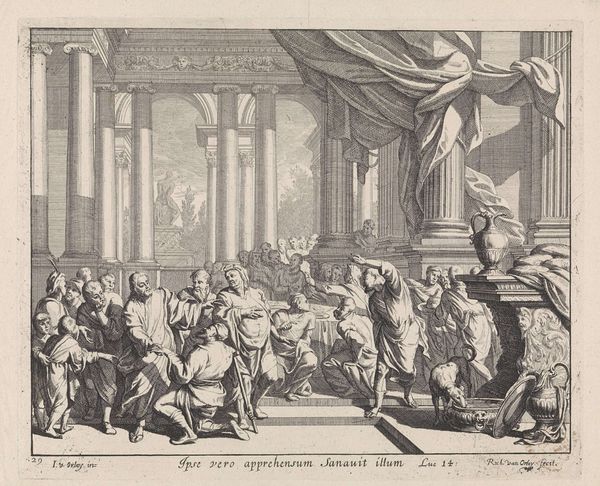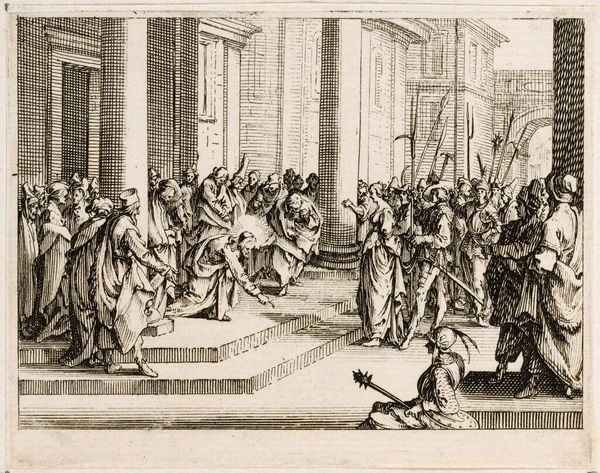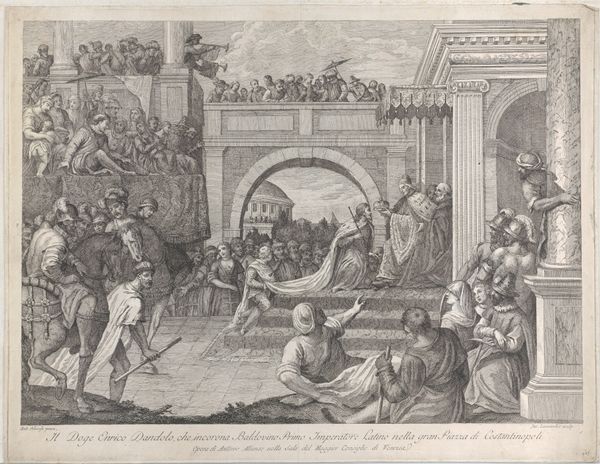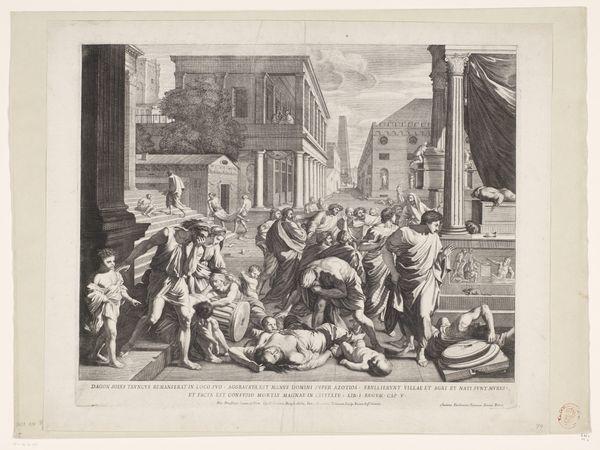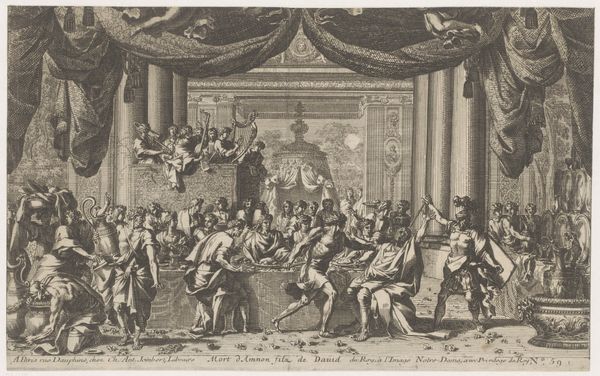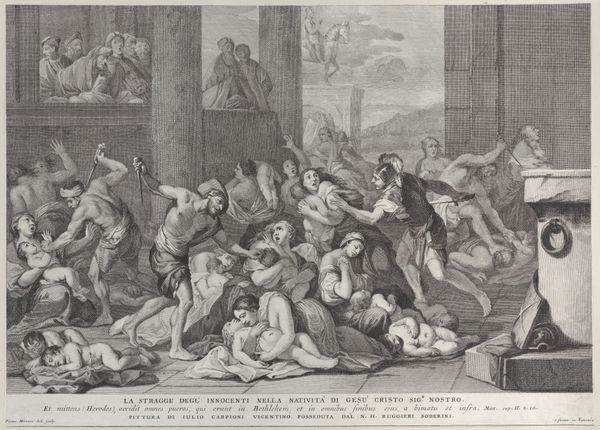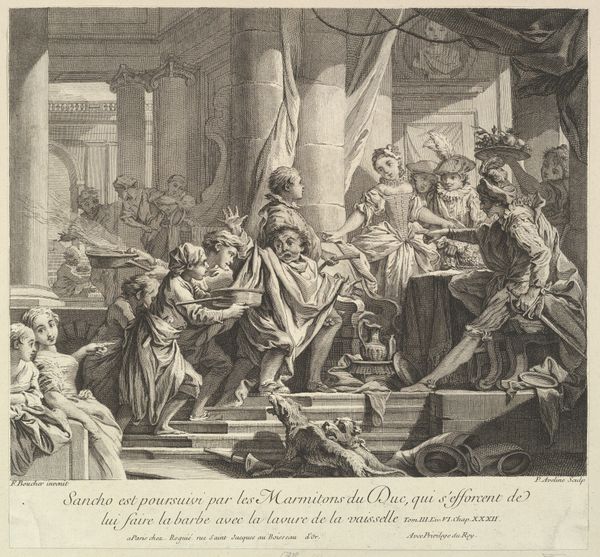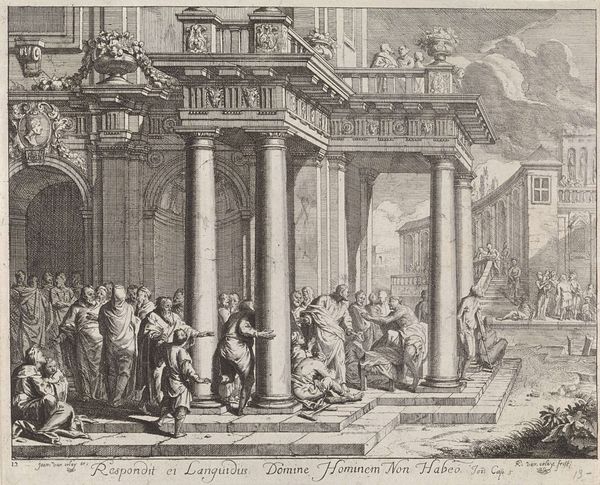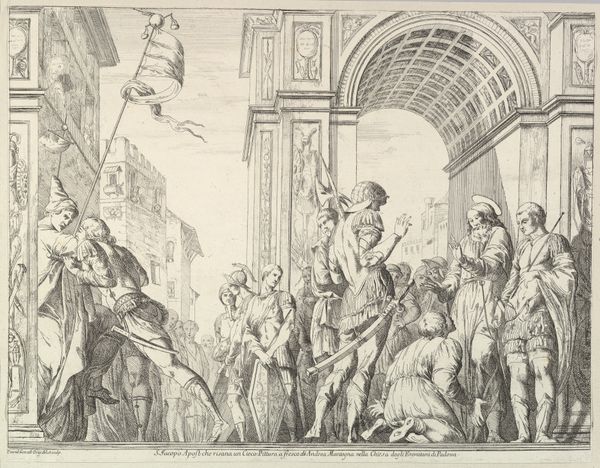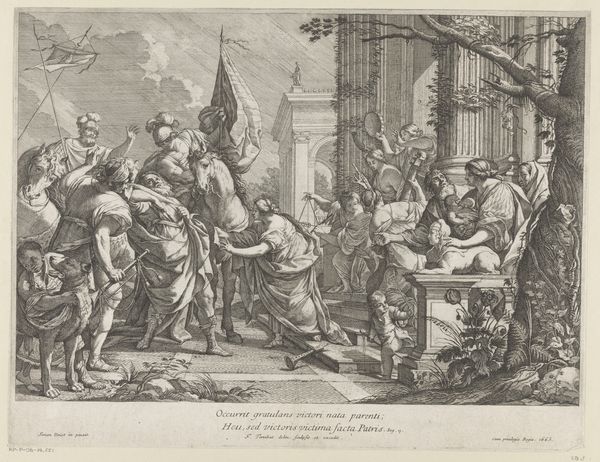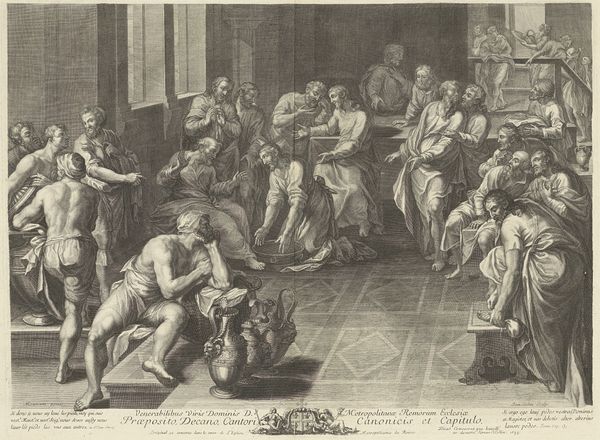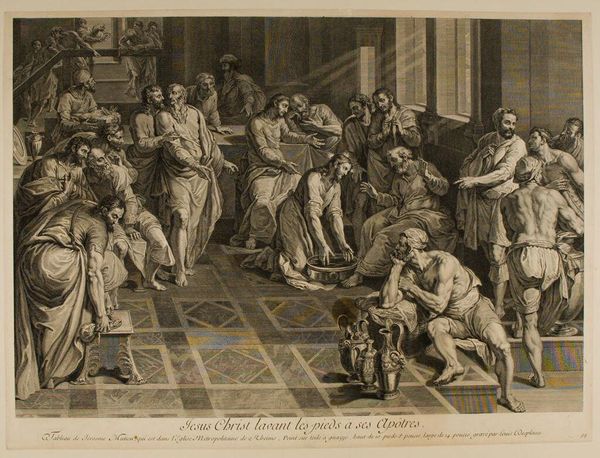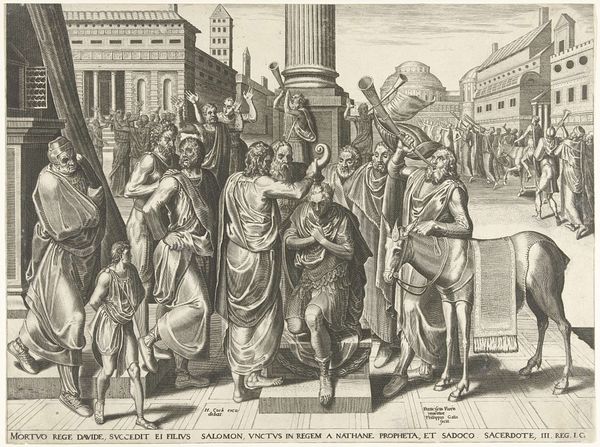
print, engraving
#
baroque
# print
#
pencil sketch
#
old engraving style
#
figuration
#
pen-ink sketch
#
history-painting
#
academic-art
#
engraving
Dimensions: height 205 mm, width 260 mm
Copyright: Rijks Museum: Open Domain
Curator: This is Jan van Orley's engraving, "Christus zegent de kinderen," placing it before 1700. The image illustrates a biblical scene where Christ blesses the children. Editor: It's intricate! The composition immediately strikes me – a clear division between the raised platform where Christ is and the crowd of people below. There's a dynamic contrast of light and shadow achieved solely through line work. Curator: Yes, van Orley employs the academic style popular at the time, drawing heavily on established visual languages for religious narrative. Notice how the architecture frames and elevates the central figures. This setting suggests a public gathering, reflecting the Baroque era's tendency to merge religious themes with everyday life. Editor: The figures' poses, though somewhat stiff, lead the eye around. The artist makes strategic use of varied line thickness, guiding my attention toward certain areas. Look how much heavier the lines are around Christ's face compared to the figures in the far background. Curator: Engravings such as this one often served didactic purposes. These works spread religious iconography and biblical stories through readily available and relatively inexpensive prints, bringing visual interpretations of scripture to a broader audience than painted works might reach. The latin inscription, "Sinite parvulos venire ad me" or "Let the little children come to me" further enforces the image's teaching aims. Editor: Despite the subject matter's supposed gentleness, the engraving has a kind of starkness. It lacks the softness or warmth you might expect. Maybe it's due to the linear nature of the engraving. It's all very defined, sharp. Curator: And this linearity would contribute to the piece's replicability and dissemination, making it easily transferable. What we see here is the intersection of faith, artistry, and dissemination of political power represented as piety through prints during the Baroque era. Editor: I was fixated on the medium and now, thinking about the lines you brought up, it takes a different perspective for me, a different feeling from the print now. Curator: Precisely! By studying its visual language within a larger cultural context, we can grasp its impact as a religious message conveyed within social and political framework.
Comments
No comments
Be the first to comment and join the conversation on the ultimate creative platform.

